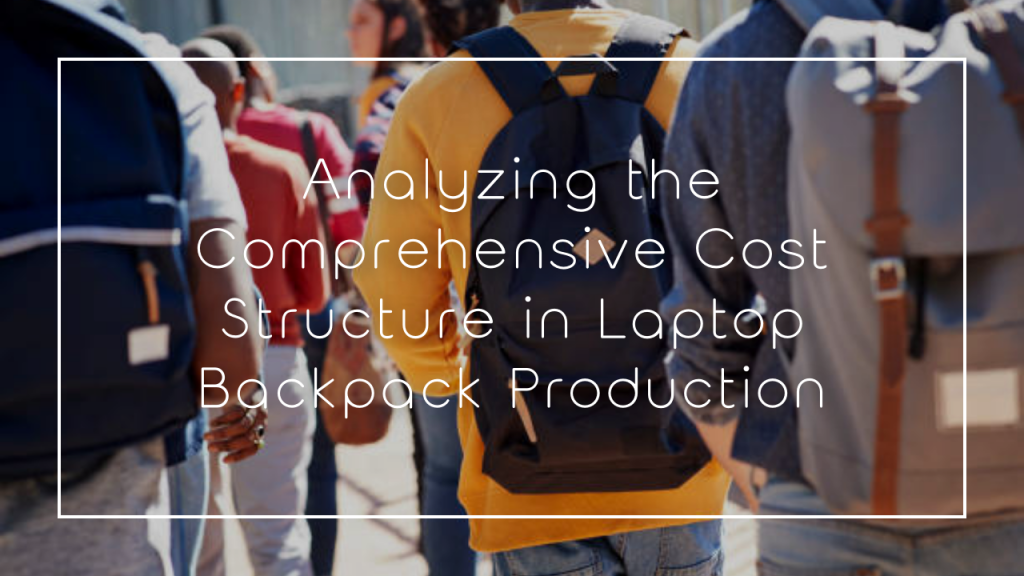
Manufacturing laptop backpacks involves various costs, from raw materials to labor to marketing and distribution. Understanding these cost factors is essential for anyone involved in the production, retail, or purchase of these items, as it provides insight into the product’s final price. Here are key cost factors in laptop backpack manufacturing:
Material Costs
- Quality of Materials: Higher quality materials (e.g., high-grade nylon, leather, or specialized synthetics) cost more. The choice between using budget-friendly materials and premium ones significantly affects the final retail price.
- Material Innovations: Specialty fabrics or materials (like waterproof coatings, RFID-blocking linings, or memory foam) add extra costs due to their advanced properties.
- Hardware: Quality zippers, buckles, and other fixtures are essential for durability and functionality, and higher quality hardware typically costs more.
Design and Development
- Research and Development: This includes market research to identify trends or gaps in the market, as well as the technical development of prototypes.
- Design Complexity: More intricate designs with additional compartments, advanced ergonomic features, or unique aesthetics require more detailed work, which increases costs.
- Tech Integration: Features like built-in USB charging ports, solar panels, or dedicated compartments for tech storage can add to production costs.
Labor
- Manufacturing Skills: High-quality craftsmanship or specialized skills (for detailed work or luxury products) demand higher wages.
- Location of Manufacturing: Labor costs can vary significantly between countries due to differences in minimum wages, living costs, and regulations.
- Volume of Production: Larger quantities can reduce the unit price due to economies of scale, but they also require more labor, influencing total costs.
Quality Control and Testing
Ensuring that products meet specific standards, especially for carrying delicate tech like laptops, involves additional processes and thus extra costs.
Regulatory Compliance
Complying with manufacturing, safety, and labor standards regulations (both local and international, depending on where the products are sold) can add layers of cost to the production process.
Packaging and Branding
Costs include not only physical packaging but also branding efforts, such as tags, informational inserts, and branded packaging materials.
Marketing and Distribution
- Marketing: This encompasses promotional efforts, including advertising, promotional materials, event sponsorships, and more.
- Distribution: Logistics costs, including shipping from the manufacturing site to retailers or directly to consumers, can be significant, especially with global distribution.
- Retail Relationships: Working with established retailers often involves additional costs or revenue sharing.
After-Sale Services
This includes warranty support, customer service, and any associated costs of returns or repairs.
Tariffs and Trade Agreements
Depending on the countries of production and sale, additional tariffs or benefits from trade agreements can impact the cost.
Each of these factors contributes to the final price of a laptop backpack. For high-end or specialty backpacks, certain factors (like material quality, craftsmanship, and brand prestige) can drive prices much higher. Conversely, mass-produced, basic backpacks typically focus on minimizing costs across these categories, often resulting in a lower-priced product.